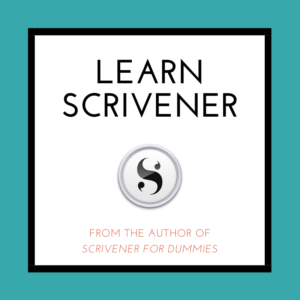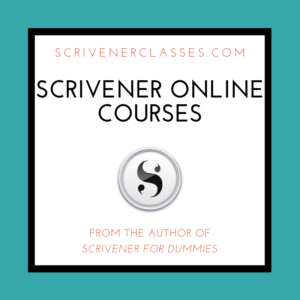I’m going to lay down the basics of people-first content because this isn’t just another trend; it’s a paradigm shift in the way creators approach content. Forget the old days when keywords ruled the roost, and cycle-stealing search engine crawlers were the only audience we had in mind. The era has changed; it’s all about delivering genuine value to flesh-and-blood readers now.
You might be wondering, ‘What exactly is people-first content?’ I’m here to help you with that. It’s the kind of content that satisfies a reader’s quest for answers, offers solutions, and entertains – all wrapped up in a neat, easy-to-digest package. It’s the kind that you’d want to read, share, and come back to.
Why are we switching gears from SEO-driven to value-driven content? The reason is clear: search engines have grown smarter. They’re now adept at seeking out content that people find useful, not just keyword-stuffed text designed to game the system. And that ties into E-E-A-T—Experience, Expertuality, Authoritativeness, and Trustworthiness. These are the new benchmarks for what makes content great.
Now, you’re going to find out about understanding your audience’s needs, which is the cornerstone of creating content that connects and converts. Getting into the mindset of our readers allows us to craft experiences that resonate on a personal level. After all, at the heart of people-first content is a deep understanding of who will be on the receiving end of whatever we put out there.

Understanding Your Audience’s Needs
Empathy is the cornerstone of creating people-first content. It’s not just about answering questions; it’s about understanding the feelings and situations behind those questions. When you put yourself in your readers’ shoes, you’re not just spouting facts; you’re addressing their real-world concerns and challenges.
Data is like a compass that guides your content strategy. By analyzing visitor data, social media interactions, and even customer feedback, you’re going to uncover a treasure trove of insights about your audience. It’s not just numbers; it’s people telling you what they care about.
Now, building user personas isn’t about creating a fictional character for your own amusement. It’s a strategic move that brings a face to your audience segment. You’re going to find out about their demographics, preferences, and pain points. This makes your message laser-focused and more likely to resonate.
So how does this tie into the next step? With a profound understanding of your audience, you’re perfectly positioned to tell stories that captivate and convert. You aren’t merely throwing information into the void; you’re crafting messages that hit home every time.

The Art of Storytelling in Content Creation
You know, there’s something magical about a good story. It can transport you to another world, tug at your emotions, and make complex ideas crystal clear. That’s the strategy I like to leverage when we talk about people-first content. It’s not just about dishing out facts and features; it’s about weaving a narrative that resonates with your readers.
I’m going to touch on how to craft engaging narratives that connect with your audience on a deeper level. First things first, you’re going to find out about humanizing your brand through stories. It’s about showing the human side of your business. Share successes, challenges, and even the occasional failure. This isn’t just about building a brand; it’s also about building relationships.
Choose something that resonates with you when incorporating relatable examples and case studies in your content. They serve as proof of your points and give your audience a tangible connection to what you’re saying. Let’s say you’re talking about productivity software. Walk them through a day in the life of someone who’s life was changed by your product. Suddenly, your software isn’t just a tool; it’s a hero in someone’s story.
Balancing emotional appeal with informative value is my favorite part. Every piece of content should inform and inspire. If you’re discussing a financial service, explain the nuts and bolts but don’t forget to paint a picture of the new possibilities that service unlocks for your clients. What does financial freedom actually look like in their lives?
Narratives are powerful, yes, but the trust and credibility you build through storytelling are even more so. In part four, I’m here to help you with how you can integrate your expertise into your story-driven content to really hammer home credibility.

Building Expertise into Your Content
If you want to cement your brand as a go-to resource, you’ve got to infuse expertise into every piece of content you publish. This isn’t just about sprinkling in impressive jargon or dropping a few names here and there. It’s about showing your readers that you really know your stuff. Here’s how you can translate your industry knowledge and experience into content that speaks volumes about your expertise.
First up, let’s talk about showcasing your background. Share stories from your own experience that relate to the topic at hand. Detailing the trials, triumphs, and lessons learned along the way will not only captivate your audience but also build credibility. Your background should underpin the advice you offer, demonstrating a deep understanding that’s been honed over time.
I’m also a firm believer in leveraging actual credentials. Whether you’ve got certifications, degrees, or notable achievements, make sure your audience knows about them. Don’t shy away from this; it’s not boasting, it’s establishing trust. That includes thought leadership as well. If you’ve been recognized by your industry or have contributed to major publications, these are badges of honor that reassure readers of your authority.
And, let’s not forget about the importance of continuous learning. Industries evolve and staying updated is key to maintaining your expert status. I make it a point to frequently attend webinars, read the latest research, and engage with other leaders in the field. Turning those lessons into content not only gives your audience fresh insights but also signals that you’re an active participant in your field, not a bystander.
Remember, your first attempt doesn’t need to be your last. Assessing your content for its expertise is an ongoing process. But when you get it right, you become an authoritative voice, a role model of sorts. And here’s the kicker – this is a gateway to building authoritativeness and trust, which is exactly what we’re going to dive into in the next section.

Cultivating Authoritativeness and Trust
I’m going to walk you through a critical element in creating people-first content: Cultivating Authoritativeness and Trust. This isn’t just about convincing your readers that you know your stuff; it’s also about building genuine relationships based on credibility.
Authoritativeness comes from being recognized as a leader in your space, and one way to achieve that is by garnering recognition from your peers and the wider audience. Share your insights at industry events, engage in meaningful conversations on social media, and contribute thought-provoking articles to reputed publications in your field.
Don’t worry too much about immediate results. Trust is earned over time. Meanwhile, focus on actions that contribute to your reputation. Display testimonials from satisfied customers or industry experts who have found value in your work. Let their words influence others about the legitimacy and impact of your content.
Transparency is your ally here. Whether it’s disclosing sources for your information, providing data to back up your claims, or being clear about any affiliations, honesty can significantly boost your trustworthiness. A transparent approach to content creation signals to your audience that they can rely on your information.
You’re going to find out about the importance of user experience (UX) and readability if you want to retain the trust of your audience. Moving on, let’s explore how creating an optimized user experience through your content can act as the bridge between authority and action, guiding the readers smoothly into the conversion process.

Optimizing for Experience: UX and Readability
You’re going to find out about prioritizing user experience (UX) along with readability, which are critical to crafting content that not only attracts but also retains your readers. In my opinion, people-first content is synonymous with an exceptional UX, ensuring that everyone can navigate and enjoy your content with ease.
Design matters. Choose something that resonates with you, but also keep all types of users in mind. A layout that’s intuitive and a format that’s accessible are non-negotiable. It’s not just about good looks; it’s about functional design that guides users through your narrative seamlessly.
Incorporating multimedia isn’t just for show—it serves a foundational role in clarifying concepts and breaking up text. Who doesn’t love a good infographic or a crisp video to drive a point home? But remember, every image, chart, and video should have a purpose that ties back to your main message.
Your content’s structure and formatting are pivotal for readability. Subheadings are signposts that keep visitors on track, while bullet points and numbered lists make complex information digestible. And don’t overlook the power of whitespace; it gives your content room to breathe, making it less daunting for readers to tackle.
You can always adjust your approach down the road, but it’s essential to get the basics of UX and readability right from the start. Your content should invite people in, not scare them away with walls of text or confusing navigation.

Conversion-Oriented Content Strategies
You’re no doubt aware that the goal of most content is to guide readers toward a desired action. That could be signing up for a newsletter, making a purchase, or just engaging more deeply with your content. This is where conversion-oriented content strategies come into play.
Clear calls to action are crucial. It may sound simple, but you’d be surprised how often this is overlooked. If you want your readers to do something, you need to be clear and direct. ‘Sign up now to receive exclusive insights’ is far more effective than a vague ‘learn more.’
The user journey is another key consideration. It’s about mapping out the various touchpoints where your content can influence the reader. Think about their journey from first hearing about your brand to becoming a loyal customer. Your content should guide and accompany them every step of the way.
Lastly, measuring the effectiveness of your content is a must. This isn’t just about click rates and conversions, though those are important. It’s also about user feedback and engagement. Are people spending time with your content? Are they sharing it? These metrics offer deep insights into how well your content is performing.

Balancing E-E-A-T and SEO: A Harmonious Approach
I’m going to show you how to marry E-E-A-T and SEO without sacrificing the integrity of your content. It’s a common misconception that focusing on SEO necessarily detracts from the quality of your content. That’s not the case. When you align both with a people-first strategy, you’re in for a win-win situation.
Start with understanding that E-E-A-T and SEO are not opponents but allies in the quest to deliver high-value content. By integrating E-E-A-T into your SEO strategy, you not only boost your rankings but also build a trustworthy brand.
Keyword research, for instance, isn’t just about finding words to pepper throughout your text. It’s about understanding the language your audience uses and the type of content they’re seeking. That means choosing keywords that resonate with your reader’s needs and questions.
But here’s where it gets interesting. SEO today favors content that people spend time reading, sharing, and engaging with. So, by enhancing your content’s expertise, authoritativeness, trustworthiness, and overall user experience, guess what? You’re also optimizing it for search engines.
Your content should be a natural habitat for your selected keywords. They shouldn’t stick out or disrupt the flow. Instead, they should seamlessly integrate into the helpful and authoritative information you’re providing.
Now, don’t worry too much about hitting every single SEO checkbox. Instead, focus on creating helpful, insightful content, and the SEO will largely take care of itself. After all, search engines are constantly improving at recognizing and rewarding content that serves users well.
Use headings and subheadings not just for SEO but to structure your content in a way that’s easy for readers to navigate. Break text into short, digestible paragraphs and use bullet points or numbered lists to break down complex concepts.
The beauty of smart SEO is that when done correctly, it’s invisible to the reader, yet entirely obvious to the search engines. This is the strategy I like to leverage – content that reads as though it’s written solely for enjoyment and education, yet performs well in search rankings.
In my opinion, the real secret to crafting content that both people and search engines love is to never compromise on quality for the sake of SEO. Choose something that resonates with you and your audience, and the rest will follow. If you keep the user experience front and center, with clear, helpful information, you’re already most of the way there.
Now, as we move to the final stretch, I’d love to guide you into evaluating and evolving your content. It’s thrilling to see good content perform, but it’s also essential to understand that your first attempt doesn’t need to be your last. Stick around as I share how to make sure your content continues to grow with your audience.
Evaluating and Evolving Your Content
I’m going to show you how to keep your content not just relevant, but also resonating with your audience well into the future. This isn’t just about numbers; it’s about the people behind them and the experiences they have with your content.
If you want to stay on top, don’t worry too much about daily fluctuations. Instead, focus on the feedback that matters. It’s what your audience is telling you, directly or through their engagement patterns, that can guide your next steps.
You can always adjust your approach down the road by keeping an eye on some key tools and metrics. These include things like user comments, time on the page, bounce rate, and conversion rates. Choose the ones that resonate with you and with your specific goals.
There’s a lot of opportunity in user-generated feedback. I’ve been loving it. It’s great for getting insights directly from the horse’s mouth. What better way to ensure your content remains valuable than by keeping tuned to what your readers are saying?
Your first attempt doesn’t need to be your last. Remember, iterative improvements based on engagement will make your content evergreen and more likely to convert. Just don’t focus too much on perfection – aim for progress.
As a wordsmith seeking to enhance your writing prowess, you’ll find many remarkable writing tools and apps at your disposal. Let’s explore some of the best options:
- Scrivener: A beloved companion for authors, Scrivener offers a treasure trove of features. It helps you track plot threads, store character notes, structure your work, and—most importantly—get serious writing done. While it’s not free, the investment is worth it for serious writers.
- Ulysses: If distraction-free writing is your goal, Ulysses is your muse. Its minimalist interface allows you to focus solely on your words. Plus, it syncs seamlessly across devices, ensuring your creativity flows wherever you are.
- iA Writer: Ideal for online writing (think Medium or WordPress), iA Writer combines simplicity with elegance. Its clean design encourages a flow state, making it a favorite among bloggers and content creators.
- Plottr: For those who thrive on outlining, Plottr is a gem. It helps you map out your novel, organize scenes, and keep your plot threads in check. Whether you’re a pantser or a plotter, Plottr has your back.
- Reedsy Book Editor: If you’re working on a book, Reedsy’s online editor is a fantastic choice. It’s free, collaborative, and offers a straightforward interface for drafting and editing your masterpiece.
- yWriter: Scene-based writers rejoice! yWriter lets you organize your novel into scenes, track characters, and maintain a bird’s-eye view of your work. It’s a powerful tool for structuring your narrative.
Remember, the best writing app is the one that aligns with your unique needs and writing style. Whether you’re crafting screenplays, novels, or blog posts, these tools will be your trusty companions on your literary journey. Happy writing! 📝✨
I’d like to hear your thoughts! Please leave your comments or questions below.
Words Beyond the Page!
Kevin
I hope you found this blog post helpful. If you did, please share it with your friends and leave a comment below. And if you want to learn more about writing, check out my other blog posts on 3D printing, affiliate marketing, and writing. Thanks for reading! 😊
Make them laugh, make them think, but above all, make them feel.



